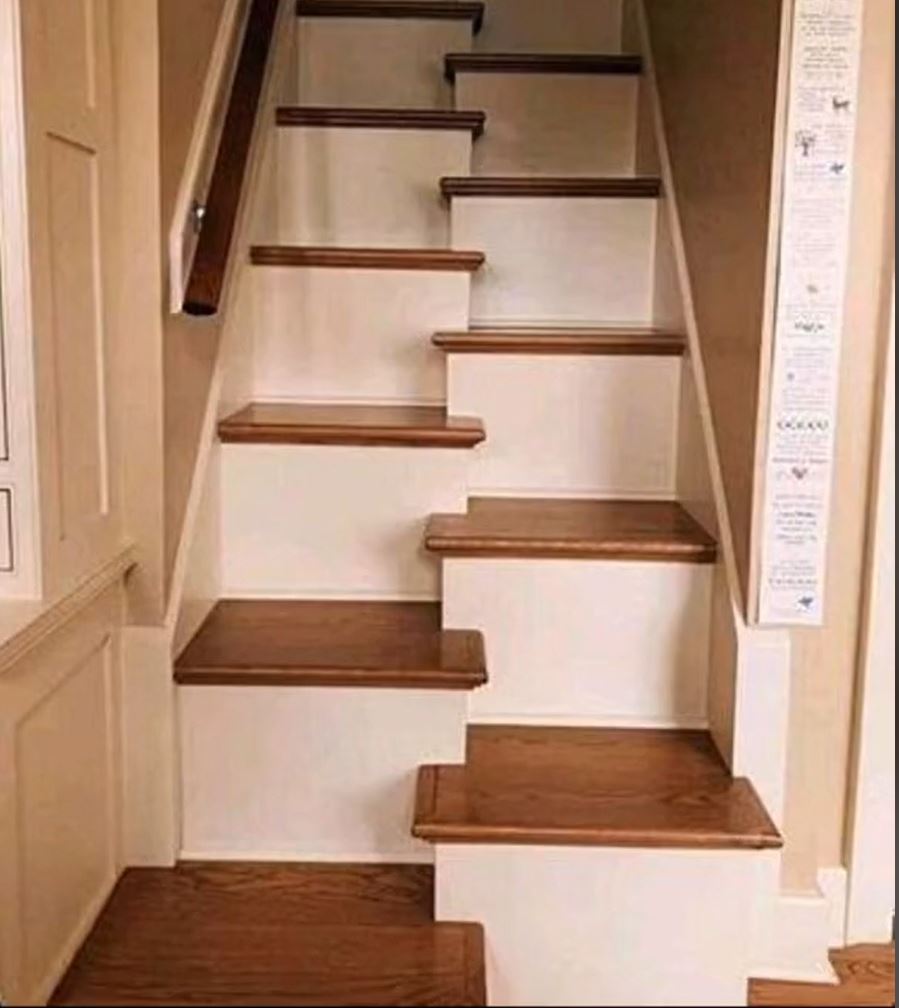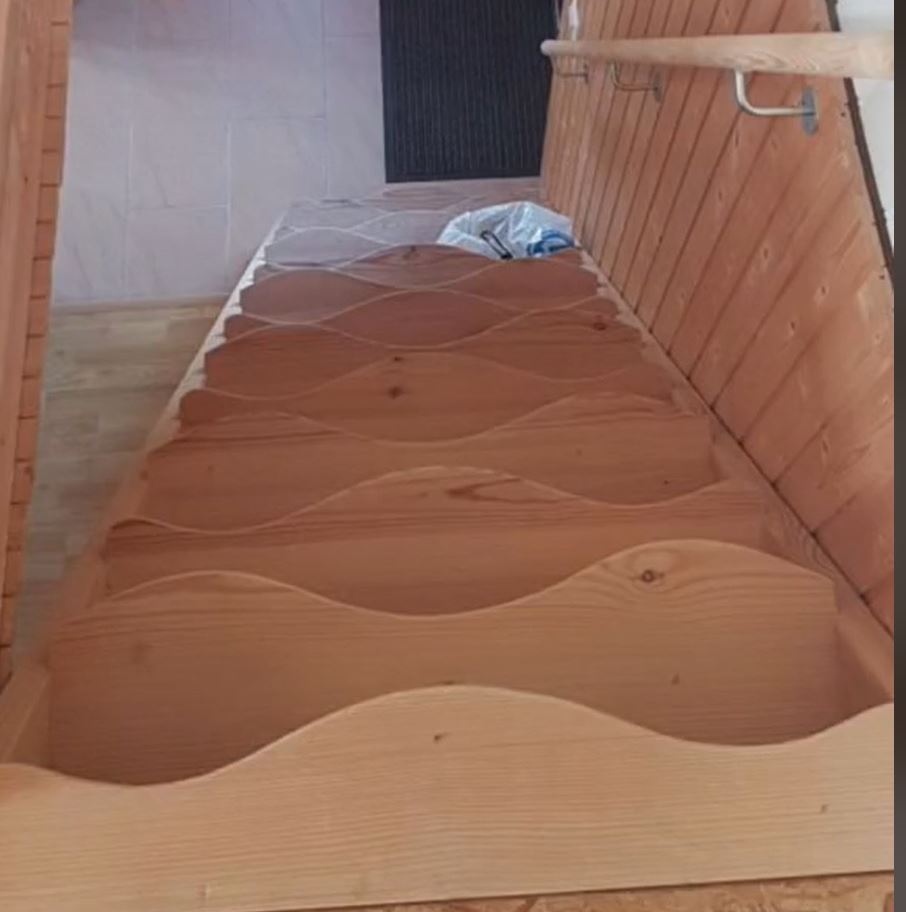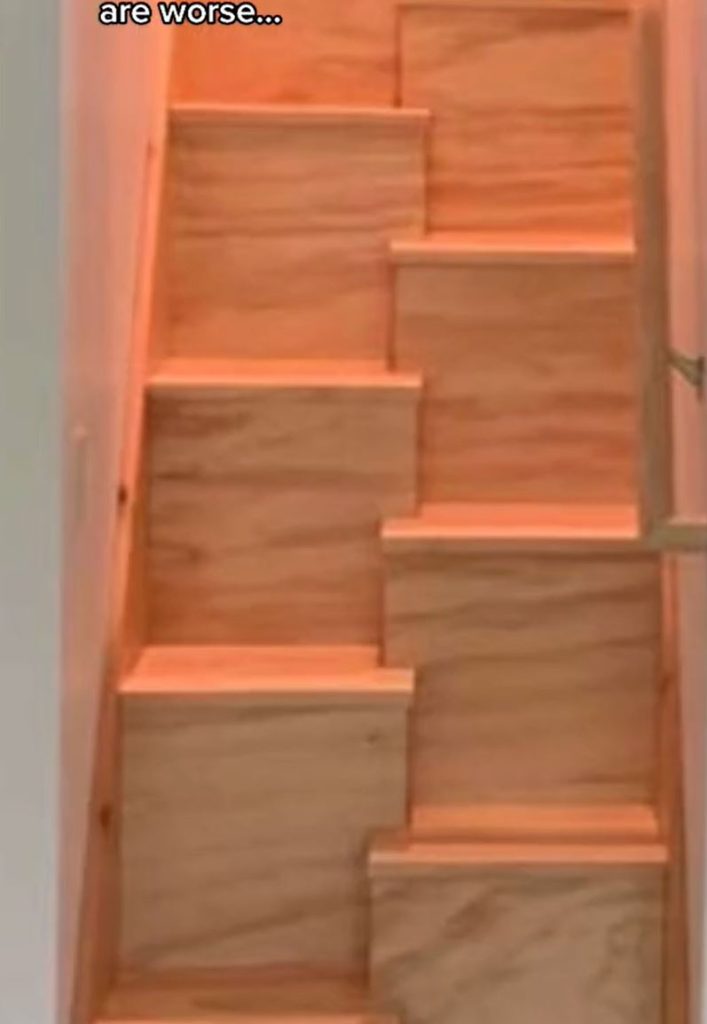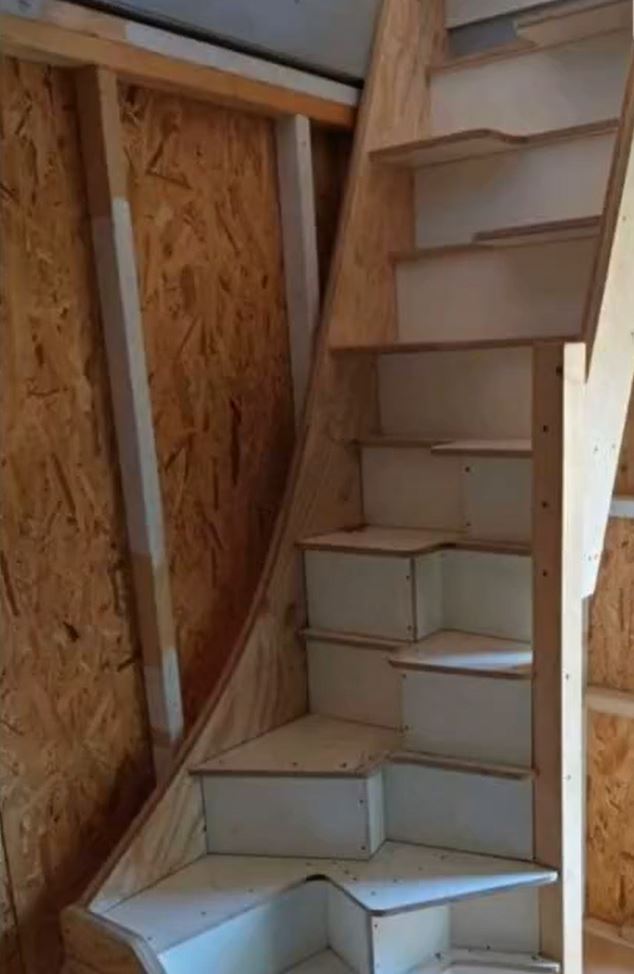Before delving into the intricate details of witches’ stairs, it’s essential to acknowledge the enigmatic aura that surrounds this peculiar design element. Originating from TikTok, these stairs captured the fascination of many due to their unconventional appearance and rumored connections to superstition and witchcraft. However, the true history behind these stairs is far more practical than their name suggests. Despite their mysterious allure, witches’ stairs serve a functional purpose, particularly in homes with limited space such as tiny dwellings, lofts, and attics.
The design and functionality of witches’ stairs are rooted in their ability to maximize space efficiency while maintaining practicality. Known as “alternate tread stairs” in architectural circles, these staircases are crafted to be as compact as possible. By staggering the steps and reducing their width, witches’ stairs ensure that staircases occupy minimal space, making them ideal for tight areas where traditional staircases would be impractical. Additionally, their unique design allows for creative uses beyond mere traversal, such as serving as storage space or display areas for valuables.
Witches’ stairs are a distinctive, if a bit odd, design element that first appeared on TikTok in March of a few years ago. The steps have a strange history, but not for the reason that is suggested by their moniker. They are allegedly not based on superstition after all and rather a ballfing design. Furthermore, they can be both aesthetically beautiful and practical when fitted and planned correctly.
The Stairs of Witches are Not What They Seem.
Witches’ stairs are very useful, especially in homes with limited space, even though their usefulness is far less interesting than the superstition around them. Tiny dwellings, lofts, and attics could be home to them. Witches’ stairs were essentially made to be as compact as possible while still being practical enough to allow people to get from one floor to another. They are commonly referred to as “alternate tread stairs” by architects.
The Workings of Witches’ Stairs
Two ways in which this design was meant to save space. The steps are staggered after being cut in half from their original width. Because they mutually assure that a staircase isn’t as big as one seen in a regular home, let alone a grand staircase, both contribute to space savings. These tiny staircases could also be used as extra book storage or as a place to showcase valuables. “The distance between treads on a given side of an alternating-tread stair is actually twice the unit rise,” writes author Scott Schuttner of “Basic Stairbuilding,” “giving you more free tread area and therefore a safer stair in theory.”
Witches’ staircases are not just useful. They meet all U.S. building laws and safety standards, despite the common misconception. A typical stairwell is three feet in width. A domestic witch staircase, on the other hand, is usually 27 to 30 inches wide.
Actual Sources
An inventor by the name of J.M. Lapeyre received a patent for a metal adaptation of witches’ stairs in 1985. In commercial and warehouse contexts, he saw the revolutionary stair option as a safer alternative to ladders in confined places.
It’s interesting to note that this design, which goes by the names “ship ladders” and “ship stairs” in addition to “witches’ steps and “alternating tread stairs,” is also utilized on oil rigs and commercial ships.
False belief
An urban legend surrounded the recordings of witches’ staircases when they initially appeared on TikTok in 2021. The staircases are said to have originated in the seventeenth century. They were allegedly incorporated into Massachusetts homes during the Salem witch trials as a deterrent to witches since “witches can’t climb up them.” Although this theory has already been refuted, there is still one that remains unproven. The design for witches’ stairs is commonly referred to as the Jeffersonian or Jefferson stair because of rumors that Thomas Jefferson invented the idea. But “Monckton’s One Plane Method Of Hand Railing and Stair Building,” which was published in 1888, also included documentation of an original design.
Dispelling the Myth
One thing is definite even though the roots of design are not entirely known. The claim that witches’ steps were built with the intention of warding off witches is unsupported by any historical evidence. In “the massive historical literature, nor the many manuscript sources” that he has examined, Robin Briggs claims that he has not found “any mention of stairs that could disable witches.” Interestingly, a lot of people with this special stairway also had “buried witch bottles under the threshold.” even included dead cats into the cloth, to ward off bewitchment,” Briggs said, adding that this was “really false misinformation.” “The nearest belief was that if you put a broom over the door lintel a witch who entered the room would be unable to leave it.”
While conjecturing about myths and stories is entertaining, discovering the real background behind witches’ staircases is also fascinating. In any event, they’re a fun and interesting way to use decor, if not a distinctive and elegant substitute for full-size staircases.
In conclusion, the mystery surrounding witches’ stairs, also known as alternating tread stairs, adds an intriguing layer to their already unique design. While they may have been subject to superstition and urban legends, their practicality and space-saving benefits make them a valuable addition to homes with limited space. Despite their unusual name and false beliefs about their origins, witches’ stairs meet safety standards and serve a functional purpose in modern architecture. Whether inspired by historical tales or innovative design, these staircases continue to capture the imagination and offer a creative solution to spatial challenges.




